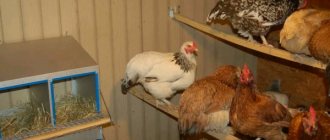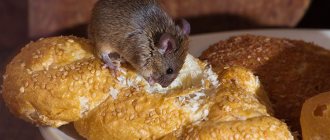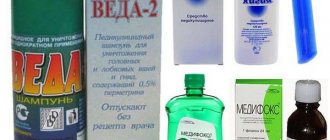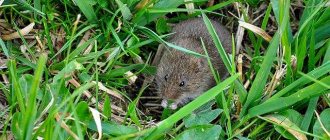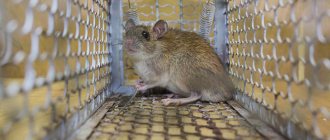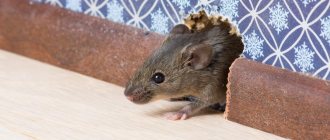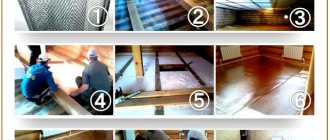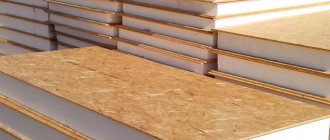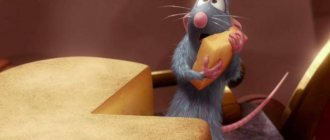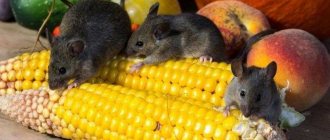How to pick something that won't be eaten
It is worth understanding that it is not so important for rodents to “eat” this insulation as to find a suitable place for their burrows. Therefore, they only gnaw small passages for themselves and walk there freely. It can be very difficult to get rid of mice that have settled between the walls; it is much easier to choose the insulation that they do not like.
Mice can eat chipboard Source stroimdom44.ru
But a rodent can mistake some floor and wall coverings for food. For example, particle board. The mouse will be able to make its own holes inside the slabs, and also eat it instead of its usual food. They are digestible because they are made from organic ingredients, so the body can digest them well. Materials from this line should be abandoned immediately, otherwise you can get neighbors and “lose” all the thermal insulation.
All the time, mice and rats sharpen their teeth, choosing wooden panels or foamed areas of the house.
Particular attention is paid to wires laid in walls or basements, which may be at risk of being chewed through. Therefore, it is worth asking what kind of insulation mice do not live in. Mice can become active even in asbestos panels, let alone simple foam for installing windows or doors.
Expanded clay
This material has long established itself not only as an excellent insulation material, but also as an absorber of noise from outside.
Filling floor cells with expanded clay Source keramzitspb.ru
If the task is to find which insulation does not harbor mice, then expanded clay is suitable. The material itself has a round shape of strong density. Fractions come in different sizes, from the smallest to quite large. Large rocks may theoretically allow rats to move around, but they will not build burrows. As for a shallow embankment, mice will fall into it like into sand, this will especially scare them away if the embankment is deep. And rats will drown because of their weight.
When pouring expanded clay, for example, to insulate the floor, there is quite a bit of free space left in the material itself, oxygen does not flow there and therefore mice will not be able to live there.
Fine expanded clay fraction Source hochu-stroitsya.ru
See also: Catalog of companies that specialize in home insulation
Small particles of such material enter the respiratory tract of rodents and clog the air flow there. In addition, expanded clay is not easy to chew, if at all possible. Mice will definitely not live in such material, since they understand that being there is dangerous.
Expanded clay is used to insulate floors, walls, basements, and attic floors. In addition to a good thermal insulation effect, you can also obtain insulation from extraneous noise.
Foam glass
Pests will not be able to breed inside this material. Presented in several forms at once, for example, crumbs, granules or blocks.
Foam glass block Source otdelkasten.com
Using blocks, you can quickly insulate indoor walls or the facade of a building. They also insulate the opening between the floor and the underground. Small crumbs are used as expanded clay fraction, poured onto the floor. It has the same properties and well protects the space of the house from the brood of mice.
Due to its strength, foam glass is resistant to pests, it is environmentally friendly and mold does not grow in it.
Ecowool
One of the new types of insulation, which has proven itself to protect against rodents. The material is made from paper waste, but it is environmentally friendly, has high thermal insulation, is fireproof, and well insulates the room from extraneous sounds. Ecowool is treated with an antiseptic.
Installation of ecowool on walls Source yandex.net
The insulation of the room is carried out using a special device; as soon as the material begins to initially set, it is rolled with a roller.
This is exactly the type of insulation that rodents do not live in. Due to its specific properties and processing, the insulation causes increased thirst in rodents and they lack air, so the mice are forced to run and leave this location.
Foam concrete
Another material that mice cannot live in due to its characteristics. Foam concrete can be compared to stone in strength, but it is quite lightweight and retains its properties for a long time.
Foam concrete insulation blocks Source kladka-penoblokov.ru
Organic insulation
For their production, waste from woodworking and agricultural production is used. Some types contain cement and plastic.
Such insulation materials include:
- Ecowool. Made from paper production waste.
- Fibrolite. Consists of wood chips.
- Sotoplast. It is made in the form of a honeycomb, filled with special fabric or paper.
- Foamed polyethylene. Made from polyethylene and a foaming agent.
- Expanded polystyrene. Better known as polystyrene foam.
- Polyurethane foam. Used to treat ceilings and walls.
- Chipboard and fibreboard. Contains wood waste.
- Arbolit. It is made from shavings, sawdust, reeds and straw.
The mice can easily gnaw through any of these materials and arrange them inside the shelter. In a wooden house, straw is often used for insulation, in which pests feel comfortable.
Insulation and rodents
Video description
What mice don’t eat
At the same time, it is immediately important to know what materials mice definitely won’t chew, and then move on to considering the least likely and favorable for rodents.
Mineral wool
Both glass and basalt mineral wool can not only be chewed by mice, but also transformed into their burrow. The most popular is glass wool. It is not only durable, elastic, and allows oxygen to pass through well, but mice often breed in it. They won’t eat it, since the glass wool is quite prickly, but mice will make passages in it.
A roll of glass wool as insulation Source orlovstroy.ru
How to insulate to keep mice away
Modern insulation materials, although they have increased thermal insulation, do not reliably protect a home from rodents entering it, like old slag, expanded clay and sawdust mixed with lime that has not been slaked. It is worth using materials that are difficult to chew through or are too small and dust can make it difficult for mice and rats to breathe inside the insulation.
Rodents in insulation Source naujienos.alfa.lt
At the same time, some people add mousetraps, poison or ultrasound to the insulation to repel rodents. Poison from rodents can negatively affect animals, children and the residents of the house themselves, so you should not add it to the insulation. Sound repellers, which work using ultrasound, act on mice and they run away. Some use wormwood for mice, and put it directly into the insulation. But you should understand that the branches may begin to rot and this will be no better than the appearance of rodents.
When it comes to the question of which insulation is best for a frame house against mice, it is better to give preference to those materials that mice do not chew, for example, expanded clay of any fraction.
How to protect the thermal insulation circuit from damage
If you got a house with a ready-made thermal insulation layer, or the mouse population suddenly began to increase, you need to take measures to protect the insulation. Otherwise, within a couple of years, heat loss will increase, and with it, heating bills will increase.
Any gaps in the casing will be used against you!
There are several options here that I would recommend implementing comprehensively:
- We protect all thermal insulation layers with dense material, preferably one that is too tough for a rodent.
- We fill the cavities and discovered passages with broken glass, wood shavings soaked in copper sulfate, or push glass wool.
- We store all food products and seed in a place inaccessible to mice. No food means no incentive to gnaw and seriously settle down in the insulated walls.
- We place poison behind the casing and in the corners, and install ultrasonic devices that repel rodents.
Well, and the most effective method, which, in addition to getting rid of rodents, has a bunch of other useful effects. Finally, get a normal cat, and every morning you will find several gray carcasses on the porch. Sooner or later the mice will run out and your insulation will be safe.
The owner, he was the one chewing the foam!
The cat, however, will stay and ask for food, but it seems to me that this is a completely acceptable price for peace and order in the house.
Briefly about the main thing
In order to understand which insulation is not chewed by mice, it is important to consider its density, the presence of dust and the possibility of chewing by mice. For example, expanded clay will be quite difficult to chew through due to the fact that it has a structure like stone. But mice will quickly chew off the foam and make a lot of holes in it. Therefore, attention is paid specifically to the structure of the material. So ecowool and foam glass will protect the house from mice, because if pests start gnawing on such materials, they will get breathing problems. And they can easily turn any mineral wool into a home, although they won’t touch it.
Ratings 0
Ways to protect insulation from rodent infestation
The possibility of pests becoming interested in insulation should be taken into account even at the stage of building construction, because it is extremely difficult to fight them in a habitable house. Experts offer the following solutions as effective prevention:
- metal mesh,
- ultrasonic repellers,
- boric acid.
Fine-mesh metal mesh is recognized as the most effective option for preventing the infestation of mice and rats. For this purpose, steel variations with a galvanized coating are optimal. The mesh is actively used as a component of floor thermal insulation; it also covers the base: the protection height must be at least one meter.
If a completed, commissioned house has been attacked by rodents, it is worth using ultrasonic repellers. Even if they are not always cheap, they do their job perfectly, preventing the spread of pests - they leave such a house.
Experts also advise coating particle boards with boric acid - rats and mice do not like it. This technique has long been adopted by manufacturers of building materials.
Ultrasonic repeller - a way to protect insulation from rodent invasion
The method that has been tried and tested for centuries works most often - bringing a cat into the house. Mice are afraid of them at the genetic level; they cannot stay in this dwelling. Having a pet helps keep both your nerves and your insulation intact.
As folk remedies, craftsmen recommend covering insulating materials during construction with tobacco dust, ash, mixed with slag, dry twigs of pine, wormwood, mint - all these products are very unloved by rodents. Hot peppers can also be an excellent option - the pods are placed tightly along the walls. Many experienced builders coat the materials with a solution of lime or borax before laying.
